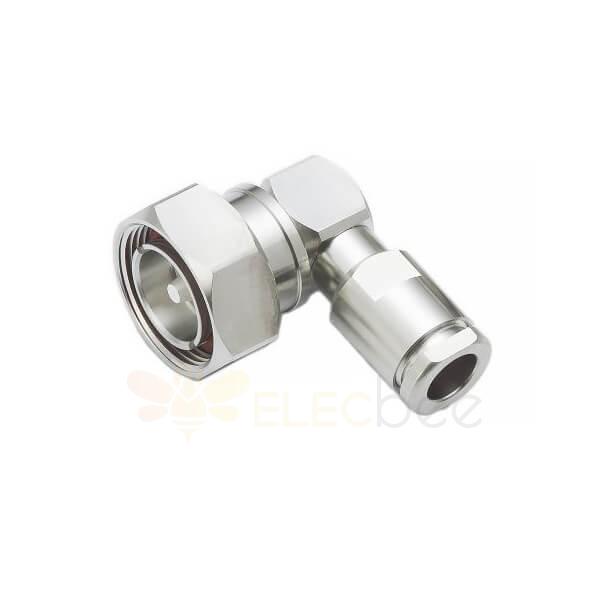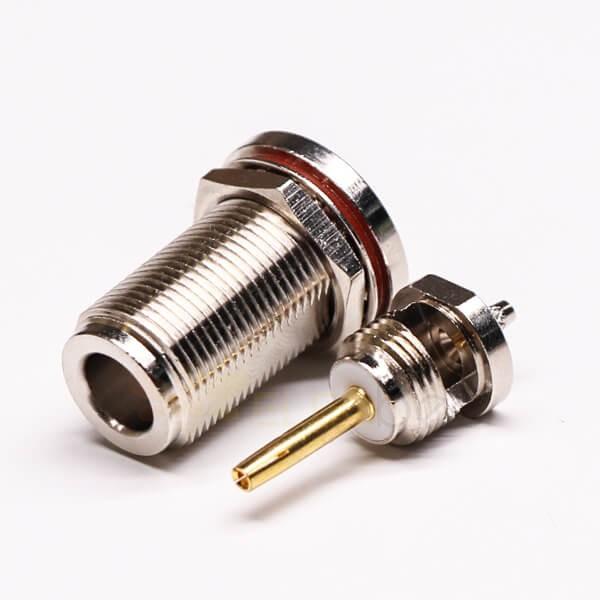In the field of telecommunications and electrical engineering, connectors play a vital role in ensuring that signals are transmitted efficiently and effectively between devices. Two of the most commonly used connectors are the 7/16 DIN and N connectors. While both connectors serve similar functions, they have several key differences that make them suitable for specific applications. In this article, we will explore the differences between 7/16 DIN and N connectors, their applications, and how to choose the right connector for your needs.
What are 7/16 DIN Connectors?
7/16 DIN connectors are a type of coaxial connector that was developed in the 1960s by the German company Deutsch Industrie Norm (DIN). These connectors are designed to operate at high frequencies of up to 7.5 GHz and are commonly used in communication systems such as cellular networks, microwave links, and satellite communications.
One of the main advantages of 7/16 DIN connectors is their high power handling capacity. They can handle up to 5000 watts of power, making them suitable for high-power applications. Additionally, 7/16 DIN connectors have a threaded design that provides a secure and reliable connection, even in harsh environments.

What are N Connectors?
N connectors are another type of coaxial connector that was developed in the 1940s by Paul Neill of Bell Labs. These connectors are designed to operate at high frequencies of upto 11 GHz and are commonly used in applications such as WLAN, GPS, and radar systems.
One of the main advantages of N connectors is their versatility. They can be used in a wide range of applications, including low-power and high-power applications. Additionally, N connectors have a bayonet-style design that provides a quick and easy connection, making them ideal for applications that require frequent connections and disconnections.

Differences Between 7/16 DIN and N Connectors
Frequency Range
One of the main differences between 7/16 DIN and N connectors is their frequency range. 7/16 DIN connectors are designed to operate at frequencies up to 7.5 GHz, while N connectors can operate at frequencies up to 11 GHz. This makes N connectors more suitable for applications that require higher frequencies.
Power Handling Capacity
Another key difference between 7/16 DIN and N connectors is their power handling capacity. 7/16 DIN connectors can handle up to 5000 watts of power, while N connectors can handle up to 1000 watts of power. This makes 7/16 DIN connectors more suitable for high-power applications.
Connection Type
The connection type is another difference between 7/16 DIN and N connectors. 7/16 DIN connectors have a threaded design that provides a secure and reliable connection, while N connectors have a bayonet-style design that provides a quick and easy connection.
Size and Shape
Finally, the size and shape of 7/16 DIN and N connectors differ. 7/16 DIN connectors are larger and heavier than N connectors, making them more suitable for applications that require a stronger and more robust connection. N connectors, on the other hand, are smaller and lighter, making them more suitable for applications that require a compact and lightweight design.
Choosing the Right Connector
When choosing between 7/16 DIN and N connectors, it is important to consider the specific application and requirements. If the application requires high frequencies and high power handling capacity, 7/16 DIN connectors would be the best choice. If the application requires versatility and a quick and easy connection, N connectors would be the better choice.
It is also important to consider the environment in which the connectors will be used. If the connectors will be exposed to harsh conditions, such as extreme temperatures or moisture, 7/16 DIN connectors would be the better choice due to their threaded design, which provides a more secure and reliable connection.
In contrast, if the connectors will be used in a more controlled environment, such as a laboratory or office, N connectors may be the better choice due to their smaller size and lightweight design, which makes them easy to handle and connect.
Conclusion
In summary, both 7/16 DIN and N connectors are essential components in the field of telecommunications and electrical engineering. While both connectors serve similar functions, they have several key differences that make them suitable for specific applications. By understanding the differences between 7/16 DIN and N connectors, you can choose the right connector for your specific application and ensure that signals are transmitted efficiently and effectively between devices. Whether you need a connector that can handle high frequencies and high power, or one that is versatile and easy to connect, there is a connector that is right for you. By taking the time to choose the right connector, you can ensure that your telecommunications and electrical engineering applications operate smoothly and efficiently.
